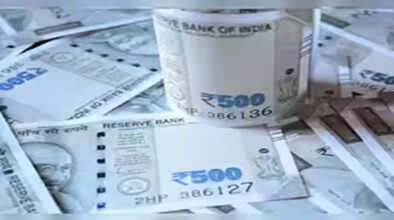Savings Account: Are you also making a big mistake by keeping the emergency fund in the savings account? Know here..

There is a risk of sudden medical emergency, job loss, or any major family requirement in every person's life. It is not known when this situation will come up. In such situations, an emergency fund comes in handy, which proves to be helpful in dealing with financial challenges in difficult situations. Most experts recommend accumulating an emergency fund equal to 6–12 months' expenses. If you have this much fund, then you will not have to depend on a loan or credit card.
But the emergency fund should be kept in a place where you can easily get money when needed. Some people put it in a savings account in this affair. But keeping money in a savings account will make it available, but you will not get much benefit from the interest on it. Know here where the emergency fund should be kept so that the money remains liquid and also gets good interest on it until it is needed.
Why is keeping money in a savings account a wrong decision?
Most people put emergency funds in savings accounts. In India, savings accounts earn an average interest of 2.5% to 3.5%. At the same time, the inflation rate is around 5% to 7%. This means that your money is actually losing value every year. For example:
Suppose you kept ₹ 2,00,000 in a savings account.
You got an annual interest of 3% i.e., ₹ 6,000.
But if inflation is 7%, then the actual purchasing power of your money decreased by ₹ 14,000.
That is, the net loss was ₹ 8,000.
The right choice: Where to keep emergency funds
1. Liquid Funds
This category of mutual funds offers low risk and better liquidity.
An average return of 6%–7% can be obtained.
You can withdraw money within 1 day.
2. Fixed Deposit (FD) with Sweep-in Facility
You can invest funds in an FD and keep a savings account linked to it.
Whenever required, money will be automatically debited from the FD.
Interest rate up to 6%–7%.
3. Recurring Deposit (RD) + Savings
If you want to create an emergency fund gradually, then an RD is the right option.
Liquidity is not as easy as an FD, but it is still better than a savings account.
4. Money Market Funds or Short-Term Debt Funds
These have a little higher risk but can give a return of up to 6%–7%.
If needed, money is available within 24 hours.
How much should be kept?
A general rule is:
A family with a single earning member should keep an emergency fund equivalent to 9–12 months of expenses.
For a double income family, 6 months of expenses is sufficient.
Common Mistakes
Keeping all the money only in the savings account.
Investing too much in high risk options (like stocks).
Making it a habit to spend the emergency fund.
Disclaimer: This content has been sourced and edited from Zee Business. While we have made modifications for clarity and presentation, the original content belongs to its respective authors and website. We do not claim ownership of the content.

